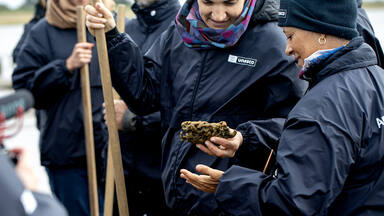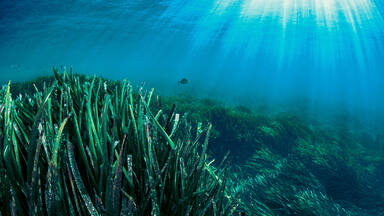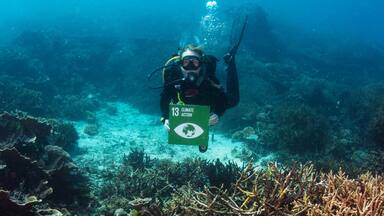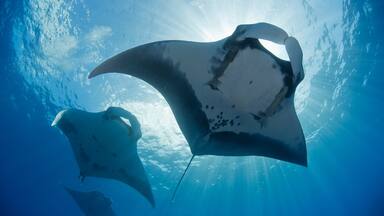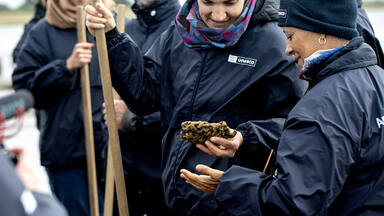Financing marine protected areas through blue carbon credits
On 26 September 2023, global marine protected area (MPA) practitioners met online with global experts, who shared firsthand insights about how blue carbon credits work, what incites businesses to invest, what a high-quality blue carbon project looks like, and how to assess viability as a sustainable financing stream in support of marine conservation.
Marine World Heritage sites, and MPAs more broadly, play an important role in mitigating the effects of climate change by protecting and conserving blue carbon ecosystems. Blue carbon ecosystems - which include seagrass meadows, tidal marshes, and mangroves - act as natural "carbon sinks," absorbing carbon dioxide from the atmosphere. When well protected, they keep billions of tons of CO2 and other greenhouse gas emissions from reaching the atmosphere.
UNESCO World Heritage marine sites play a critical role in the protection of the globe’s blue carbon ecosystems. Despite covering less than 1 percent of the world’s oceans, World Heritage marine sites protect at least 21% of the global area of blue carbon ecosystems.
But lack of sufficient financial support often hampers good conservation. Research shows that a majority of the world’s more than 18,000 marine protected areas fall short of their conservation goals due to a lack of adequate finance.
Financing conservation of MPAs can be boosted through blue carbon credit strategies, whereby countries earn carbon credits for demonstrating carbon benefits from conservation and restoration of blue carbon ecosystems. According to Dr. Whitney Johnston from Salesforce, current demand for high-quality blue carbon credits from companies and investors is estimated to be worth USD$10 billion. But blue carbon initiatives are still in an early stage. In 2022, only 11 blue carbon projects were registered with the world’s leading carbon crediting program.
The online meeting brought together leading voices in carbon credit markets, including Ms. Liz Guinessey (Manager of Food and Blue Carbon Innovation, Verra), Dr. Paula Christina Sierra-Correa (Head of Marine Research and Information, Marine and Coastal Research Institute in Colombia; INVEMAR), Dr. Whitney Johnston (Director of Ocean Sustainability, Salesforce) and Dr. Emily Pidgeon (Vice President of Ocean Science and Innovation, Conservation International).
The blue carbon project being implemented at the Cìspata MPA in Colombia offered insights about the viability of blue carbon credits as a sustainable financing solution for the protection of MPAs. Ms. Paula Christina Sierra-Correa from INVEMAR illustrated how the initiative in Columbia provides also important socio-economic benefits to the local community beyond the immediate outcomes for nature conservation.
Due to their status as the world’s flagship marine protected areas, UNESCO World Heritage marine sites are uniquely positioned to drive change and innovation, help set global standards in conservation excellence, and serve as beacons of hope in a changing ocean.
This online meeting is made possible with the support of the Principality of Monaco and in partnership with the Intergovernmental Oceanographic Commission of UNESCO (IOC). IOC shares the Coordinator role for the International Partnership for Blue Carbon, which connects government agencies with non-governmental organisations, intergovernmental organisations and research institutions from around the world enabling knowledge exchange and building global collaborations on blue carbon.
Recordings of the online meeting are available upon request (wh-marine@unesco.org).

